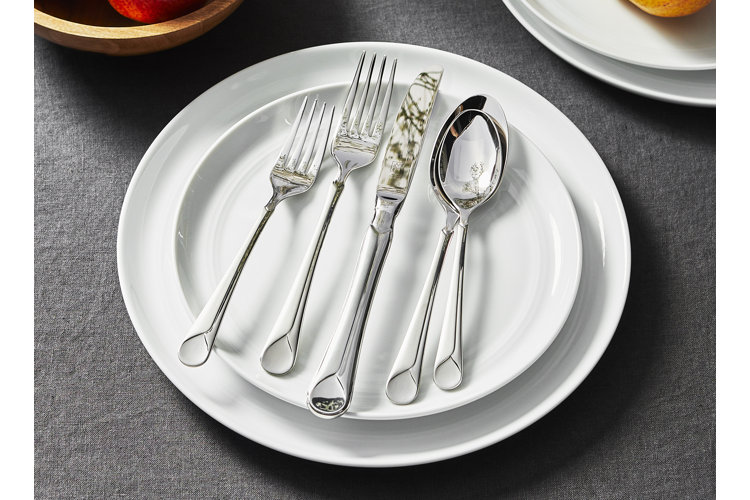Flatware vs. Silverware: What's the Difference?
Find the best utensils for you.
If you are in the market for new utensils, you may have come across the terms flatware and silverware. These two words are often used interchangeably, but they actually refer to different things. In this article, we will explore flatware vs. silverware and discuss the similarities and differences between these two types of utensils.
What Is Flatware vs. Silverware?
Flatware refers to any set of utensils used for eating, regardless of the material it is made from. This includes forks, knives, spoons, and serving utensils. Flatware is typically made from stainless steel, but can also be made from other materials such as plastic or wood. It is versatile, durable, and easy to care for, making it a popular choice for everyday use.
Silverware, on the other hand, refers specifically to utensils that are made from silver or silver-plated metal. Silverware is often considered more formal than flatware, and is commonly used for special occasions or fine dining. Silverware is known for its shine and elegance; however, due to its high cost and maintenance requirements, silverware has become less common in modern households.
Both flatware and silverware serve the same purpose: to aid in eating and food preparation. They both come in various designs and styles, allowing you to choose the perfect set to match your personal taste and decor. Additionally, both flatware and silverware require proper care and maintenance to ensure their longevity – though the type of care differs.
Flatware vs. Silverware: Differences
The main difference between flatware and silverware is the material they are made from. While flatware is made from stainless steel or other durable materials, silverware is typically made from silver or silver-plated metal. This means that silverware is typically much more expensive – often hundreds of dollars per place setting – and requires more maintenance than flatware.
When it comes to maintenance, silverware is susceptible to tarnish and corrosion, which can cause the metal to darken or turn black over time. This happens because the silver in the silverware reacts with sulfur compounds present in the air to form a layer of silver sulfide.
To prevent tarnishing and corrosion, silverware needs to be polished regularly. Polishing involves removing the tarnish from the surface of the silverware using a specialized cleaner or polish. This process not only restores the shine and luster of the silverware but also helps to prevent further tarnishing.
Another maintenance requirement for silverware is proper storage. It's important to store silverware in a dry and cool place, away from direct sunlight and moisture. Exposure to moisture can cause pitting and corrosion, while exposure to sunlight can cause discoloration and fading.
On the other hand, flatware made from stainless steel or other durable materials is much more affordable and easier to care for. It can be washed in a dishwasher or by hand using soap and water. Stainless steel flatware does not tarnish, corrode, or rust easily, making it a low-maintenance option that's great for everyday use.
There are several reasons why someone might choose flatware over silverware. First and foremost, flatware is much more affordable than silverware. Stainless steel flatware is easy to care for and can last for many years, making it a great choice for everyday use. Additionally, flatware comes in a wide variety of styles and designs, allowing you to choose the perfect set to match your personal taste and decor.
Flatware is also more durable than silverware, and is less likely to tarnish or become damaged over time. This makes it a better choice for families with children, as they are less likely to damage the utensils during mealtime.
While silverware is more expensive and requires more maintenance than flatware, there are some situations where it may be the better choice. Silverware is often used for formal events, such as weddings, anniversary dinners, and holiday gatherings. It has a special elegance and shine that adds a touch of luxury to any table setting.
Additionally, silverware is often passed down as a family heirloom, and has sentimental value. If you have inherited a set of silverware from a family member, you may choose to use it for special occasions as a way to honor their memory, or you may choose to purchase it to begin a tradition of your own.
While flatware and silverware are both used for eating and food preparation, they differ in material, price, and appearance. Ultimately, the choice between flatware vs. silverware comes down to personal preference and your specific needs. Regardless of which one you choose, investing in a high-quality set of utensils can elevate your dining experience. Check out our full selection of flatware and silverware on Wayfair!

